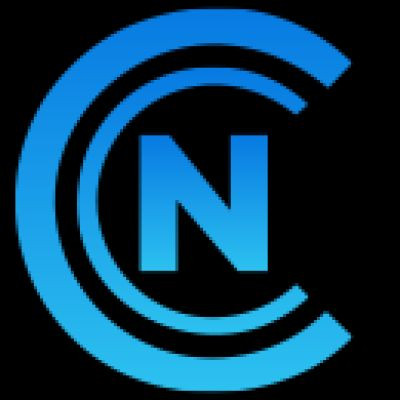In the realm of 3D content creation and design, NVIDIA Omniverse has emerged as a game-changing platform. It's a powerful tool that enables creators, engineers, and designers to collaborate across various applications and render lifelike images. This article explores the Omniverse platform, focusing on its technology, benefits, and potential impact on various industries.
What is NVIDIA Omniverse?
NVIDIA Omniverse is a platform that facilitates real-time collaboration and photorealistic simulation. It utilizes NVIDIA RTX technology, providing users with a shared environment for design collaboration across multiple software platforms.
Key Components
Nucleus: The central server that coordinates the Omniverse, managing the live synchronization between different users and applications.
Connectors: These are plugins that enable compatibility with various design and animation tools like Autodesk Maya, Blender, and others.
Renderer: Provides real-time ray tracing, enabling photorealistic visualization.
Benefits of Using Omniverse
Real-time Collaboration: Multiple users can work on the same project simultaneously, seeing changes in real-time.
High-quality Rendering: Leveraging ray tracing technology, Omniverse offers stunning visual quality, bringing designs to life.
Interoperability: With connectors for different software, Omniverse acts as a universal translator, bridging gaps between various 3D design tools.
Scalability: It can be used by individuals, small studios, or large enterprises, providing a scalable solution for various needs.
Applications Across Industries Entertainment
Filmmaking and Animation: Filmmakers and animators can create stunning visual effects and animations collaboratively.
Game Development: Game designers can develop rich, immersive environments with high-quality rendering.
Architecture and Engineering
Architectural Visualization: Architects and designers can create realistic representations of buildings and interiors.
Product Design: Engineers can work together on complex machinery and automotive designs, viewing changes in real-time.
Healthcare
Medical Training and Simulation: Allows for the creation of realistic simulations for medical training purposes.
Future Possibilities
Virtual Reality Integration: The future may see integration with VR, opening new avenues for immersive design experiences.
AI and Automation: Leveraging NVIDIA's AI technology could lead to smarter design processes and automation.
Education and Training: Educational institutions could utilize Omniverse for teaching design, animation, and engineering, promoting collaboration and creativity.
Conclusion
NVIDIA Omniverse represents a significant leap in 3D content creation, enabling unprecedented collaboration, efficiency, and quality. Its applications stretch across industries, and its future potential is vast.
As the platform continues to grow and evolve, it promises to reshape how we think about design, collaboration, and visualization, opening new horizons for creativity and innovation.
Whether you are a designer, artist, or engineer, NVIDIA Omniverse offers tools to transform the way you work, bringing your ideas to life in stunning realism.
 Bitcoin: $97645.34 1.28%
Bitcoin: $97645.34 1.28%  Ethereum: $3406.38 2.87%
Ethereum: $3406.38 2.87%  Tether: $1.00 0.1%
Tether: $1.00 0.1%  Solana: $255.74 0.38%
Solana: $255.74 0.38%  BNB: $651.93 4.43%
BNB: $651.93 4.43%  XRP: $1.44 1.84%
XRP: $1.44 1.84%  Dogecoin: $0.42 3.27%
Dogecoin: $0.42 3.27%  USDC: $1.00 0.03%
USDC: $1.00 0.03%  Cardano: $1.04 7.81%
Cardano: $1.04 7.81%  Lido Staked ETH: $3389.31 2.41%
Lido Staked ETH: $3389.31 2.41%  TRON: $0.21 6.69%
TRON: $0.21 6.69%  Avalanche: $41.62 5.67%
Avalanche: $41.62 5.67%  Shiba Inu: $0.00 2.15%
Shiba Inu: $0.00 2.15%  Stellar: $0.50 67.09%
Stellar: $0.50 67.09%  Wrapped Bitcoin: $97473.81 1.2%
Wrapped Bitcoin: $97473.81 1.2%  Polkadot: $8.48 34.42%
Polkadot: $8.48 34.42%  Chainlink: $17.46 12.06%
Chainlink: $17.46 12.06%  Bitcoin Cash: $504.89 3.35%
Bitcoin Cash: $504.89 3.35%  UNUS SED LEO: $8.61 1.43%
UNUS SED LEO: $8.61 1.43%  NEAR Protocol: $6.10 7.69%
NEAR Protocol: $6.10 7.69%  Litecoin: $98.06 8.54%
Litecoin: $98.06 8.54%  Uniswap: $10.84 14.31%
Uniswap: $10.84 14.31%  Multi Collateral DAI: $1.00 0.01%
Multi Collateral DAI: $1.00 0.01%  Internet Computer: $11.21 10.73%
Internet Computer: $11.21 10.73%  Crypto.com Coin: $0.19 2.92%
Crypto.com Coin: $0.19 2.92%  Sp8de: $0.59 12.92%
Sp8de: $0.59 12.92%  Ethereum Classic: $29.44 5.19%
Ethereum Classic: $29.44 5.19%  Artificial Superintelligence Alliance: $1.36 9.95%
Artificial Superintelligence Alliance: $1.36 9.95%  VeChain: $0.04 27.36%
VeChain: $0.04 27.36%  Filecoin: $5.33 12.56%
Filecoin: $5.33 12.56%  Stacks: $2.06 5.17%
Stacks: $2.06 5.17%  OKB: $50.53 9.72%
OKB: $50.53 9.72%  Monero: $160.03 0.79%
Monero: $160.03 0.79%  Aave: $175.37 6.03%
Aave: $175.37 6.03%  Algorand: $0.30 22.93%
Algorand: $0.30 22.93%  Fantom: $0.87 19.99%
Fantom: $0.87 19.99%  The Graph: $0.24 11.43%
The Graph: $0.24 11.43%  Hedera Hashgraph: $0.15 10.68%
Hedera Hashgraph: $0.15 10.68%  Injective: $27.73 13.05%
Injective: $27.73 13.05%  Cosmos: $8.14 10.85%
Cosmos: $8.14 10.85%  THORChain: $5.60 5.86%
THORChain: $5.60 5.86%  THETA: $1.89 11.78%
THETA: $1.89 11.78%  MANTRA DAO: $3.62 1.15%
MANTRA DAO: $3.62 1.15%  Raydium: $5.95 1.57%
Raydium: $5.95 1.57%  Maker: $1648.04 0.49%
Maker: $1648.04 0.49%  Arweave: $21.93 24.32%
Arweave: $21.93 24.32%  Bitcoin SV: $70.49 4.28%
Bitcoin SV: $70.49 4.28%  KuCoin Token: $11.43 3.11%
KuCoin Token: $11.43 3.11%  Polygon: $0.57 21.2%
Polygon: $0.57 21.2%  Flow: $0.82 14.28%
Flow: $0.82 14.28%  Quant: $100.69 16.98%
Quant: $100.69 16.98%  Gala: $0.03 14.47%
Gala: $0.03 14.47%  Lido DAO: $1.33 8.52%
Lido DAO: $1.33 8.52%  EOS: $0.76 6.99%
EOS: $0.76 6.99%  Tezos: $1.13 2.75%
Tezos: $1.13 2.75%  Axie Infinity: $6.63 11.93%
Axie Infinity: $6.63 11.93%  Neo: $14.43 8.16%
Neo: $14.43 8.16%  Helium: $5.77 6.17%
Helium: $5.77 6.17%  The Sandbox: $0.41 14.56%
The Sandbox: $0.41 14.56%  Decentraland: $0.51 17.97%
Decentraland: $0.51 17.97%  GateToken: $10.99 8.32%
GateToken: $10.99 8.32%  Akash Network: $3.89 4.03%
Akash Network: $3.89 4.03%  AIOZ Network: $0.81 11.74%
AIOZ Network: $0.81 11.74%  eCash: $0.00 2.2%
eCash: $0.00 2.2%  Nexo: $1.35 3.52%
Nexo: $1.35 3.52%  Pendle: $5.26 4.8%
Pendle: $5.26 4.8%  MultiversX: $35.34 16.47%
MultiversX: $35.34 16.47%  Mina: $0.71 6.28%
Mina: $0.71 6.28%  FTX Token: $2.47 1.78%
FTX Token: $2.47 1.78%  Zcash: $47.89 5.72%
Zcash: $47.89 5.72%  Conflux: $0.17 9.49%
Conflux: $0.17 9.49%  Chiliz: $0.08 10.57%
Chiliz: $0.08 10.57%  IOTA: $0.22 18.22%
IOTA: $0.22 18.22%  Gnosis: $272.84 4.67%
Gnosis: $272.84 4.67%  Oasis: $0.09 13.2%
Oasis: $0.09 13.2%  XinFin Network: $0.05 16.54%
XinFin Network: $0.05 16.54%  SuperVerse: $1.31 6.52%
SuperVerse: $1.31 6.52%  PancakeSwap: $2.16 10.51%
PancakeSwap: $2.16 10.51%  Curve DAO Token: $0.50 12.28%
Curve DAO Token: $0.50 12.28%  Nervos Network: $0.01 5.88%
Nervos Network: $0.01 5.88%  Kusama: $38.63 77.76%
Kusama: $38.63 77.76%  Compound: $63.92 18.06%
Compound: $63.92 18.06%  Kava: $0.49 7.05%
Kava: $0.49 7.05%  TrueUSD: $1.00 0.05%
TrueUSD: $1.00 0.05%  NXM: $73.23 4.97%
NXM: $73.23 4.97%  Theta Fuel: $0.07 4.84%
Theta Fuel: $0.07 4.84%  DeXe: $8.24 1.14%
DeXe: $8.24 1.14%  1inch Network: $0.36 6.19%
1inch Network: $0.36 6.19%  Synthetix: $1.98 9.66%
Synthetix: $1.98 9.66%  Zilliqa: $0.02 14%
Zilliqa: $0.02 14%  WOO: $0.24 11.34%
WOO: $0.24 11.34%  Celo: $0.79 9.52%
Celo: $0.79 9.52%  Reserve Rights: $0.01 8.47%
Reserve Rights: $0.01 8.47%  Trust Wallet Token: $1.01 4.5%
Trust Wallet Token: $1.01 4.5%  Livepeer: $11.58 10.27%
Livepeer: $11.58 10.27%  IoTeX: $0.04 3.71%
IoTeX: $0.04 3.71%  Amp: $0.01 7.62%
Amp: $0.01 7.62%  Enjin Coin: $0.23 13.46%
Enjin Coin: $0.23 13.46%  Holo: $0.00 9.46%
Holo: $0.00 9.46%  Dash: $32.90 11.87%
Dash: $32.90 11.87% 








